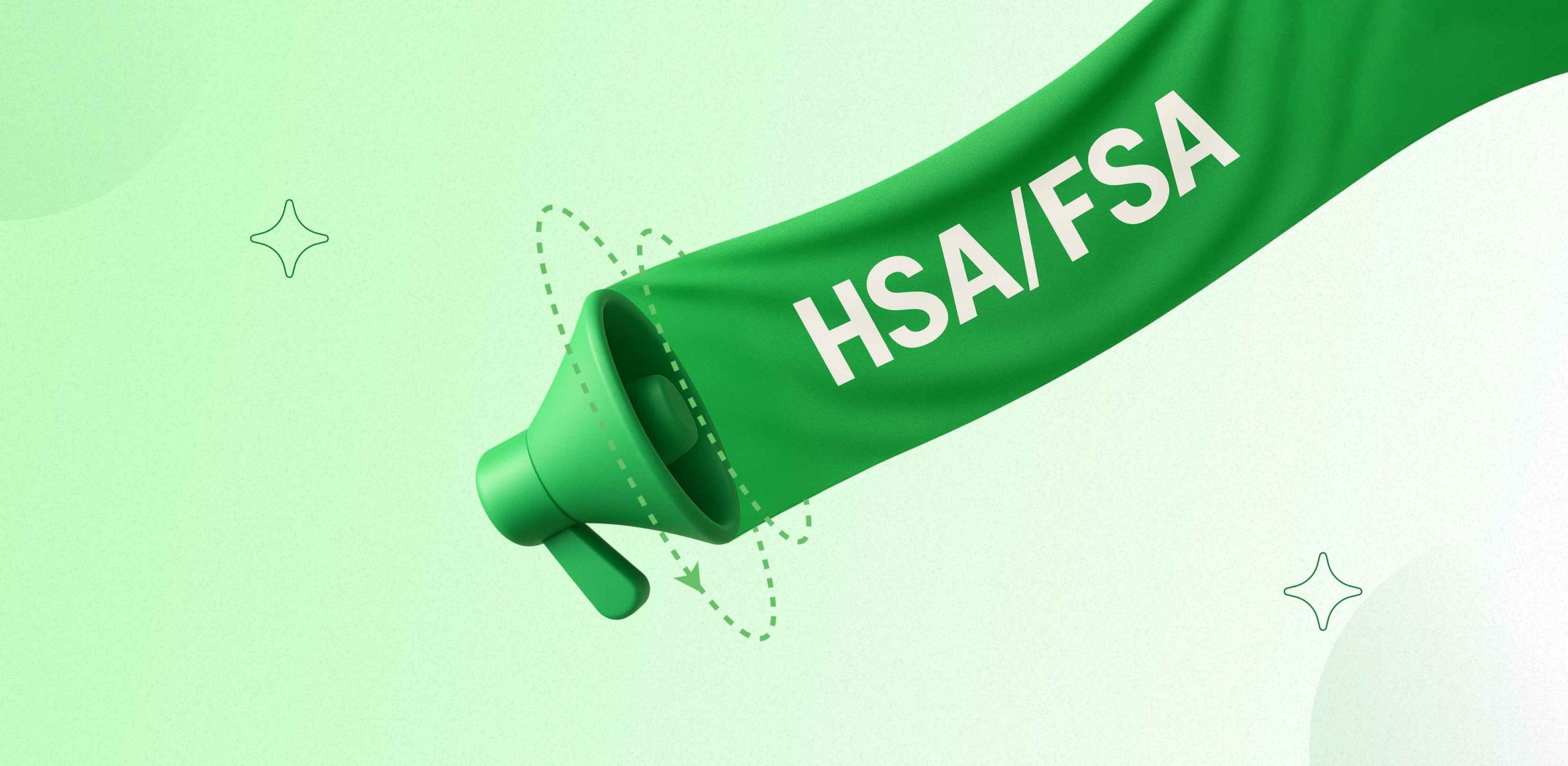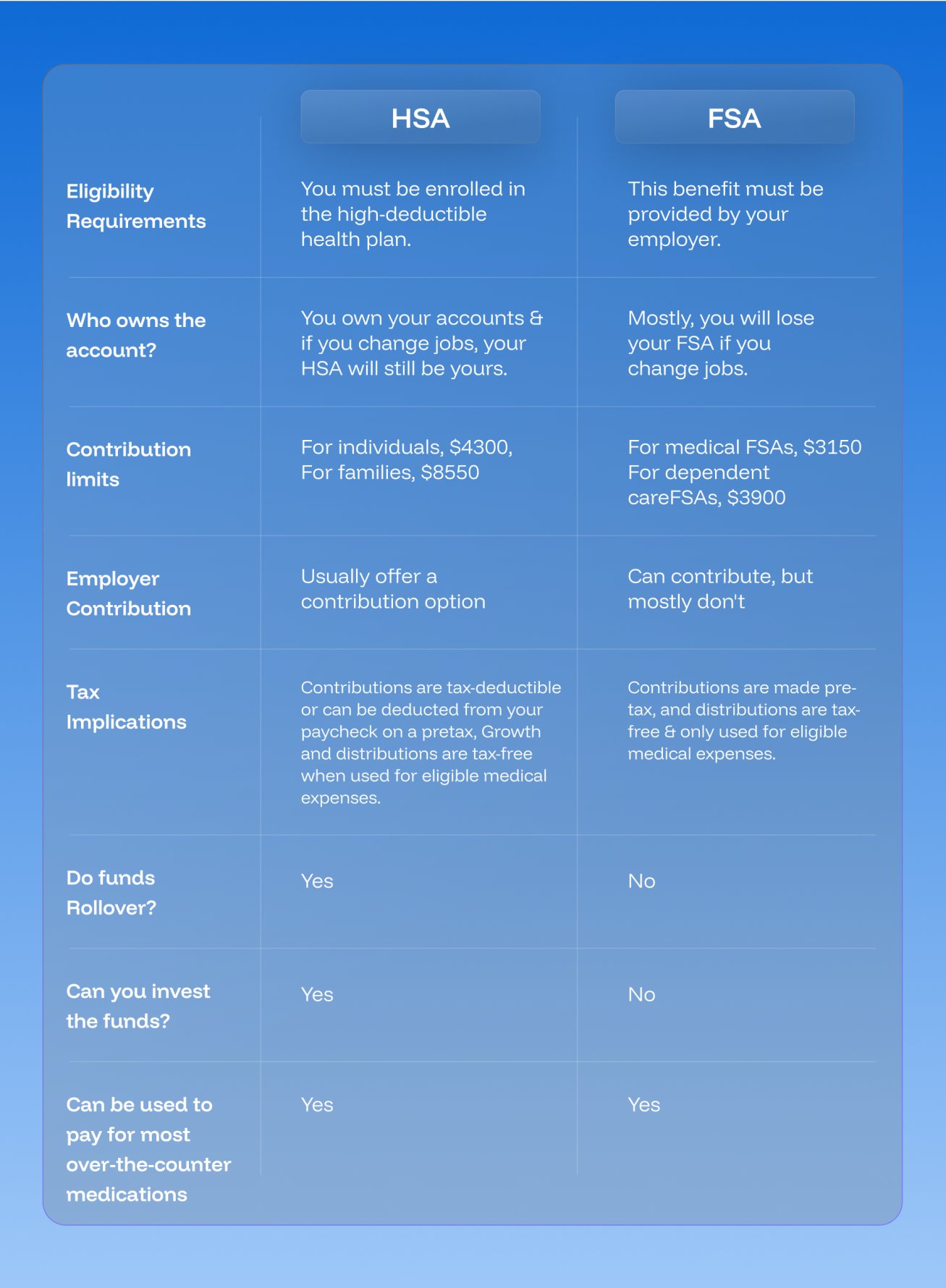The Skinny on HSA and FSA

Get the essentials!
Discover everything you need to know about HSA and FSA in one quick read!
HSA and FSA accounts offer a powerful way to save money on medical expenses while enjoying valuable tax benefits. These special savings accounts let you use your health funds not just for doctor visits or prescriptions, but also for wellness essentials like gym memberships, nutrition plans, recovery tools, biometric tests, and sleep aids—things that actually support your overall health, not just treat illness.
Still, many people find HSAs and FSAs a bit confusing. That’s completely normal—and exactly why Sika is here. We’re breaking down everything you need to know so you can confidently use these accounts to make smart, health-boosting, and budget-friendly decisions.
An HSA is like a piggy bank just for health. It’s not insurance, but it helps you save money for medical needs while also cutting down on your taxes. To get an HSA, you need to have a high-deductible health plan (HDHP). These plans have lower premiums but higher out-of-pocket costs. So, HSAs help you save cash and fill in the gaps. The cool thing is they give you more control over your healthcare spending. You get to choose where and how to spend your money.
When you use an HSA right, it’s like hitting the jackpot with pre-tax contributions, potential investment growth, and tax-free withdrawals for medical expenses!
HSAs: Tax Perks Galore!
HSAs come with a triple tax advantage:
- Contributions are tax-deductible.
- Growth in the account is tax-free.
- Withdrawals for medical expenses are tax-free too.
So, not only do you save on income tax, but you can also invest your HSA cash for potential growth without paying taxes on the gains. It’s like a tax-saving trifecta!

How to Get an HSA?
To open an HSA, you need a high-deductible health plan. For 2024, that means your plan must have a deductible of at least $1,600 for an individual or $3,200 for a family. You can usually get an HSA through your employer along with your health plan. But if you buy an HDHP on your own, you can open an account directly with an HSA provider like Lively, HealthEquity, or Fidelity.
Opening one is pretty straightforward:
- Check if you’re eligible.
- Pick an HSA provider.
- Gather your info, like social security number and employment details.
- Choose your coverage type (individual or family).
- Open the account, put in the cash, and you’re good to go!
When you get an HSA or FSA, you’ll usually get a debit card. This makes it easy to pay for eligible products or services. Or, you can pay out of pocket and get reimbursed later.
Can Anyone Get an HSA?
Not everyone can. You need to be covered by an HDHP, not enrolled in Medicare, and can’t be claimed as a dependent on someone else’s tax return.
How Self-Employed Folks Can Get an HSA?
If you’re self-employed, you can still get an HSA. Just pick an HSA-eligible HDHP and open an account through a financial institution. You can stash cash in there pre-tax and use it like an investment tool.
Using Your HSA: The Nitty-Gritty
HSAs are accounts you own, unlike FSAs (more on those later). Here’s how to use them:
- Know what counts as a medical expense. The IRS has a list, but you might need a Letter of Medical Necessity from Sika for some products and services.
- You can take money out whenever you want.
- Once you’re 65, you can still use HSA cash for medical bills tax-free. But if it’s not for medical purposes, you’ll pay income tax.
- Before 65, if you use HSA funds for non-medical purposes, you’ll get hit with a 20% penalty plus income tax.
- You don’t have to cash out right away. You can pay for purchases upfront, let your HSA grow through investments, and get reimbursed later.
How Much Can You Put in Your HSA?
For 2024, the maximum contribution is $4,150 for individuals and $8,300 for families. But these limits can change, so keep an eye out for updates
Can Employers Chip in?
Yep, they can toss in some cash, too. Just remember you can’t go over the yearly limit with both your contributions combined.
How Much Should You Put In?
As much as you can without breaking the bank or going over IRS limits, it depends on your health costs, money situation, and future healthcare needs.
How to Get Your HSA Funds?
You can pull money out whenever you want. But if it’s not for medical purposes, you’ll owe taxes and maybe a penalty if you’re under 65.
And no, your HSA cash doesn’t expire. It sticks around until you need it.
Is an HSA Worth It?
Absolutely! The tax perks, flexibility, and potential for growth make it a great tool for managing your health and money.
Now, onto Flexible Spending Accounts (FSAs).
What’s the Deal with FSAs?
FSAs, or Flexible Spending Accounts, are employer-sponsored plans where you can put away some of your paycheck before taxes kick in. You can use this cash for your healthcare or that of your dependents.
How Does an FSA Work?
Your Healthcare FSA is like a money magician. You decide how much to stash away tax-free every year, and it gets swiped from your paycheck. This stash becomes your go-to for all sorts of medical expenses (including preventative!), and you get to save on taxes while you’re at it.
What’s So Great About an FSA?
FSAs are like the financial gift that keeps on giving. They save you taxes, give you freedom in healthcare spending, and shrink your taxable income. Plus, unlike HSAs, you don’t need a high-deductible health plan (HDHP) to get in on the action.
How to Get in on the FSA Action?
Opening an FSA is easy, especially during open enrollment:
- Check if your employer offers an FSA.
- Decide how much you want to pay into your FSA during open enrollment.
- Brush up on your FSA plan rules and fill out the paperwork.
Why Get an HSA or FSA?
So, why bother with these accounts if you already have health insurance? They can save you money! On average, folks save about 30-40% on stuff they buy with their HSA/FSA. In real terms, that could mean almost $1000 in tax savings for you or double that for a family in a year.
With an HDHP, you might have to pay more upfront before your insurance kicks in. That’s where HSAs and FSAs can help cover those costs until you hit your deductible.
Plus, your insurance might not cover everything, leaving you with out-of-pocket expenses. These could be anything from copays and prescriptions to preventive stuff like fitness gear and nutrition advice, as long as it’s for diagnosing, treating, preventing, or managing a health condition.
Also, some employers match your HSA contributions, which means free money for you!
How Do Contributions and Withdrawals Shake Out?
You figure out how much to contribute to your FSA before the plan year starts. For 2024, you can contribute up to $3,200. Then, when you need to cover a medical expense that insurance does not cover, use your FSA!
But here’s the kicker: most FSAs have a “use it or lose it” rule. That means if you don’t spend your FSA cash by the end of the year, poof—it disappears. Some employers offer a grace period or let you roll over a bit of leftover cash, though. Be sure to read your plan’s specifics.
Is It Worth It?
FSAs can be a sweet deal just for the tax breaks alone. Just remember to watch out for the “use it or lose it” part when deciding how much to throw into your FSA piggy bank.
Is It Worth It?
FSAs can be a sweet deal just for the tax breaks alone. Just remember to watch out for the “use it or lose it” part when deciding how much to throw into your FSA piggy bank.
What can HSA and FSA funds be used for?
Both HSAs and FSAs allow you to spend your money on a variety of healthcare needs. But for some products/services not already on the list, you might need a Letter of Medical Necessity to prove it’s for a legitimate health reason. Sika is here to help! Sika brings together customers like you with healthcare providers to determine if a Letter of Medical Necessity can be issued. To learn more about this, click here [TO LMN].
For example, you can use your HSA and FSA funds for:
– Prescriptions
– Doctor’s visits
– First aid supplies
– Dental bills
– Eye care
– Baby care products
– Chiropractic visits
– And more!
But if you want to pay for products/services like certain over-the-counter meds, medical or fitness equipment, gym memberships, some wearables, and other products that have both medical and non-medical uses, you might need a Letter of Medical Necessity in order to use your HSA/FSA money.
How does Reimbursement with HSAs and FSAs Work?
There are several ways to access your HSA or FSA funds when buying medical/healthcare products and services.
- Pay for stuff upfront or swipe your HSA/FSA card. Check out Sika’s partner merchants here.
- Get that Letter of Medical Necessity for purchases that are not always eligible for HSA/FSA payment.
- Keep all your receipts.
- Submit a reimbursement request or substantiation, as required, through your HSA/FSA provider’s portal.
- Get your cash back through direct deposit, a check, or a reload of your FSA card.
Sika Makes Using Your HSA/FSA a Breeze
Sika is all about making it simple to use your HSA/FSA money for health-related purchases. Here’s how it works when a company teams up with Sika:
If what you’re buying isn’t always eligible for HSA/FSA according to IRS rules, you’ll see a “checkout with Sika” option. Sika will walk you through a brief process to request a Letter of Medical Necessity:
- Fill out a medical intake form
- Chat with Sika’s healthcare provider
- Receive a Letter of Medical Necessity, if eligible
- Make your purchase with your HSA/FSA card
For the pre-approved, always eligible HSA/FSA products/services, Sika makes buying easy. At checkout, click “checkout with Sika,” use your HSA or FSA card like normal, and Sika takes care of the rest. No need to hassle with reimbursements.
HSAs and FSAs: Health Your Way
HSAs and FSAs are like the dynamic duo of healthcare savings. HSAs come with tax perks and investment options, while FSAs offer a structured way to handle medical expenses.
Sika Health is here to help you manage your funds wisely, spend smart, and let your health journey be a win for your wallet, too.